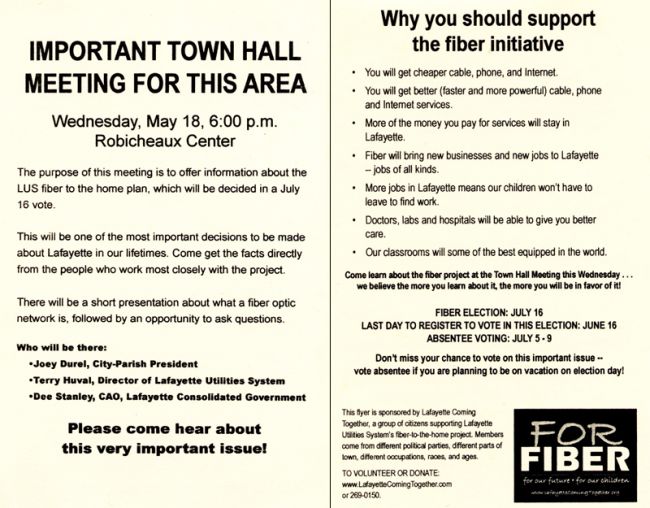Fast, affordable Internet access for all.
Referendums
Content tagged with "Referendums"
Displaying 1351 - 1360 of 1545Border to Border Broadband in Minnesota
Border to Border Broadband in Minnesota
Border to Border Broadband in Minnesota
Resource: 2005 Lafayette Referendum Flyer

Resource: 2005 Lafayette Referendum Flyer

Resource: 2005 Lafayette Referendum Flyer

Resource: 2005 Lafayette Referendum Flyer

Resource: 2005 Lafayette Referendum Flyer

Google Congratulates Longmont on Referendum
Update: A contact at Google cast doubt on whether the call below was made -- but also reiterated that Google is on the record opposing state laws like that in Colorado that take authority away from communities.
We have learned that Google called Longmont Power to congratulate them on regaining their authority via the successful referendum. Apparently, Longmont was a top contender for the Google Gigabit project but Google was unable to determine whether Longmont had the authority to work with them due to the anti-competitive 2005 Qwest law.
Presumably this places Longmont back on the list of places Google may try to build a network depending on the outcome in Kansas City.
This is yet another example of why state restrictions on local broadband authority is entirely counter-productive to spurring broadband investment. We previously speculated that Texas law prevented Austin from being Google's partner.
States: STOP taking broadband authority away from communities. Local authority is essential for investment in next-generation networks. Communities: make sure you are making smart partnerships! Don't just jump at anyone pretending to offer a free lunch.




